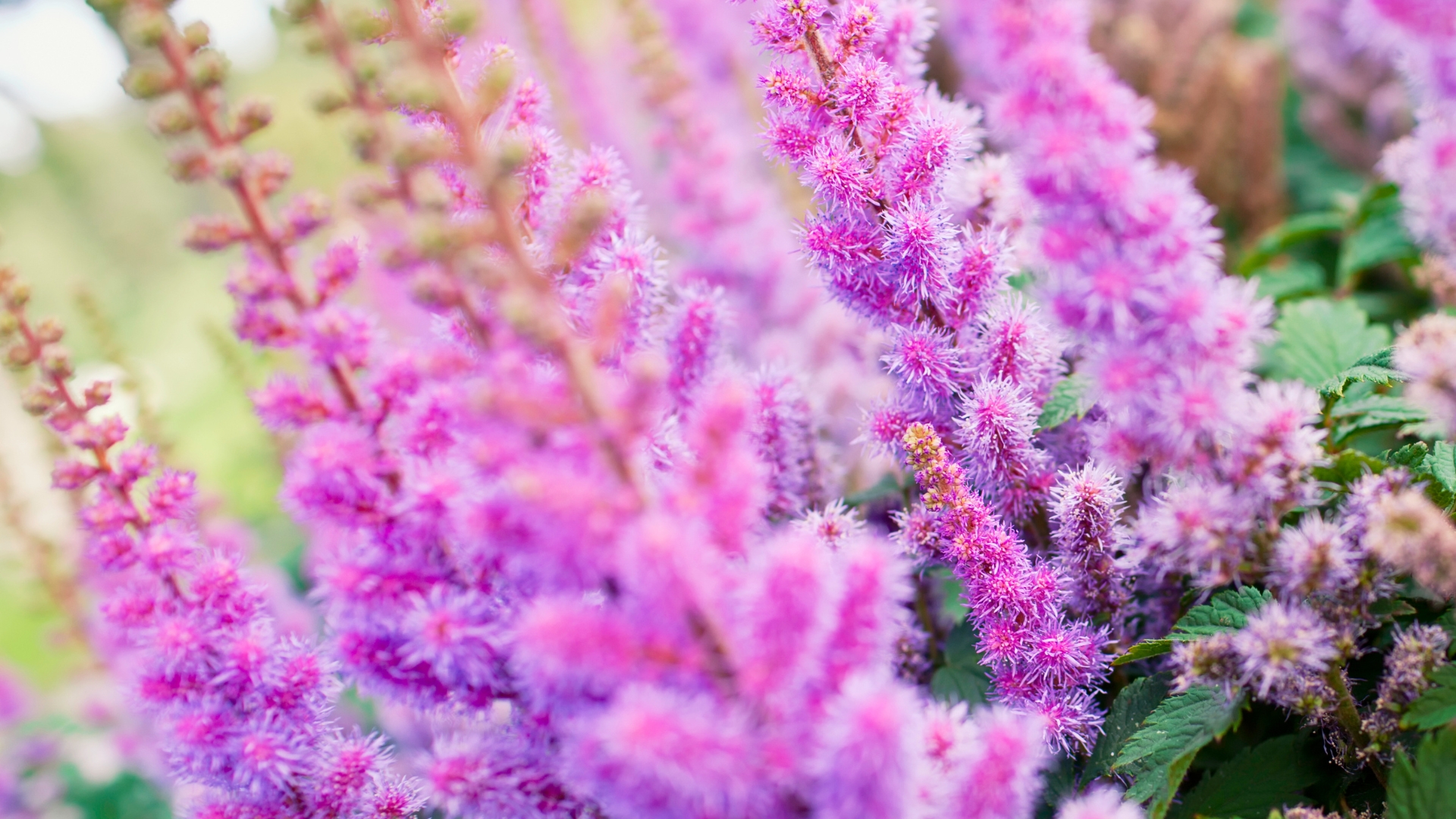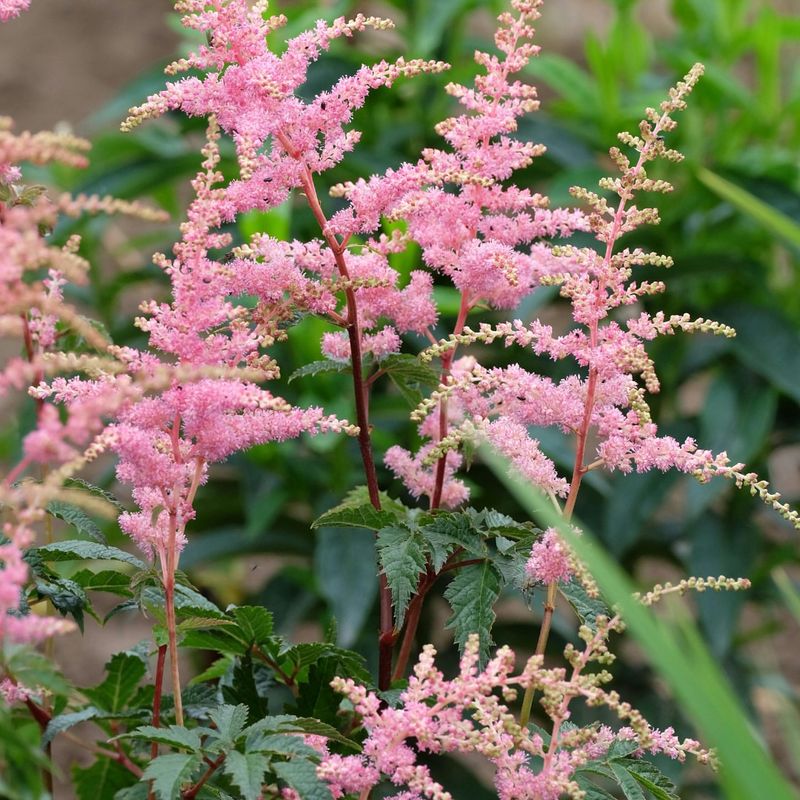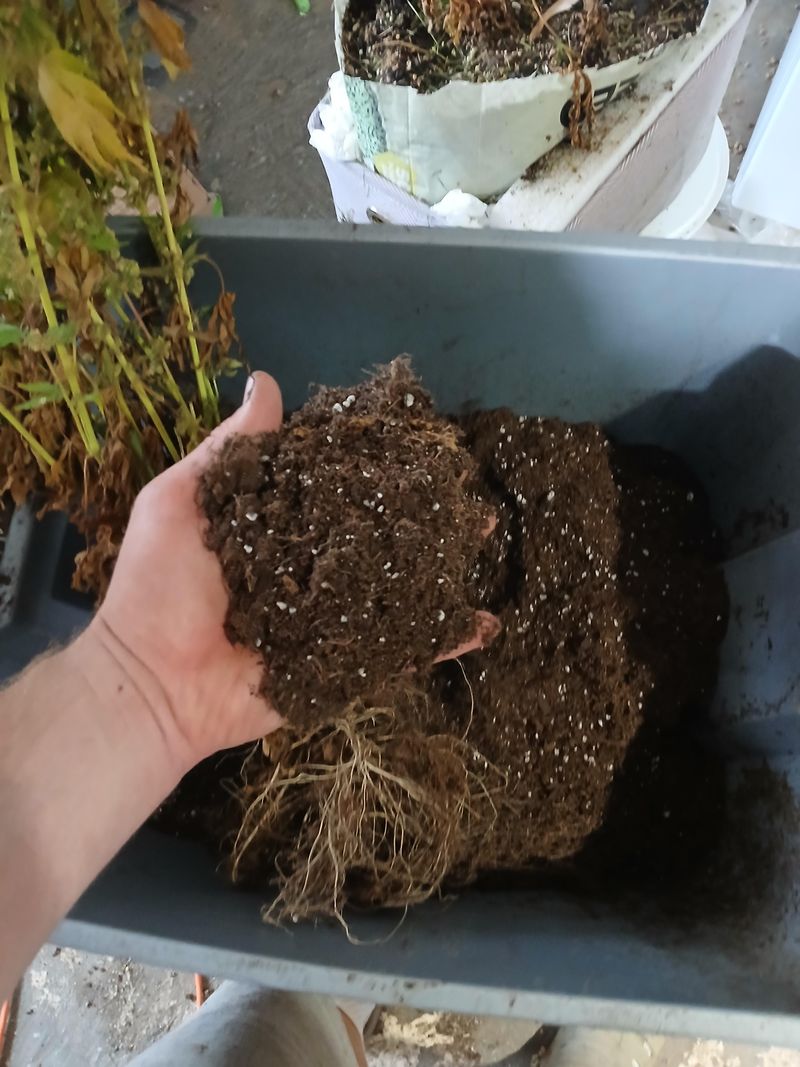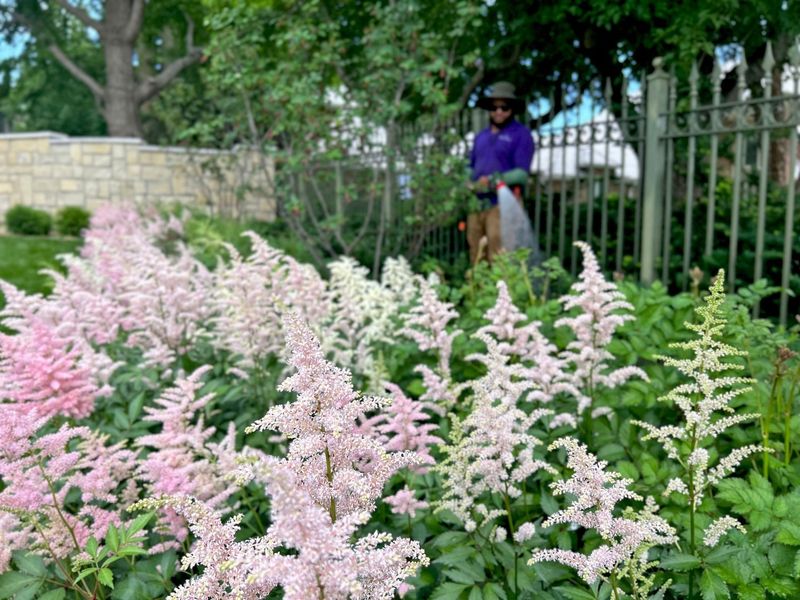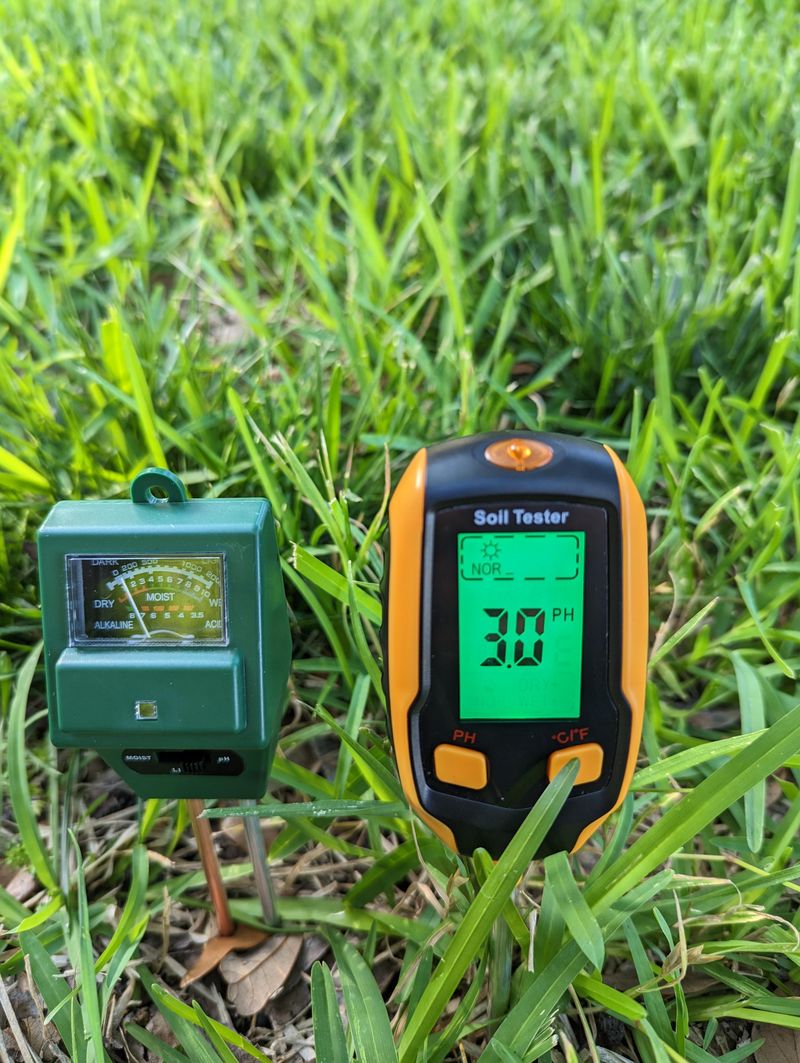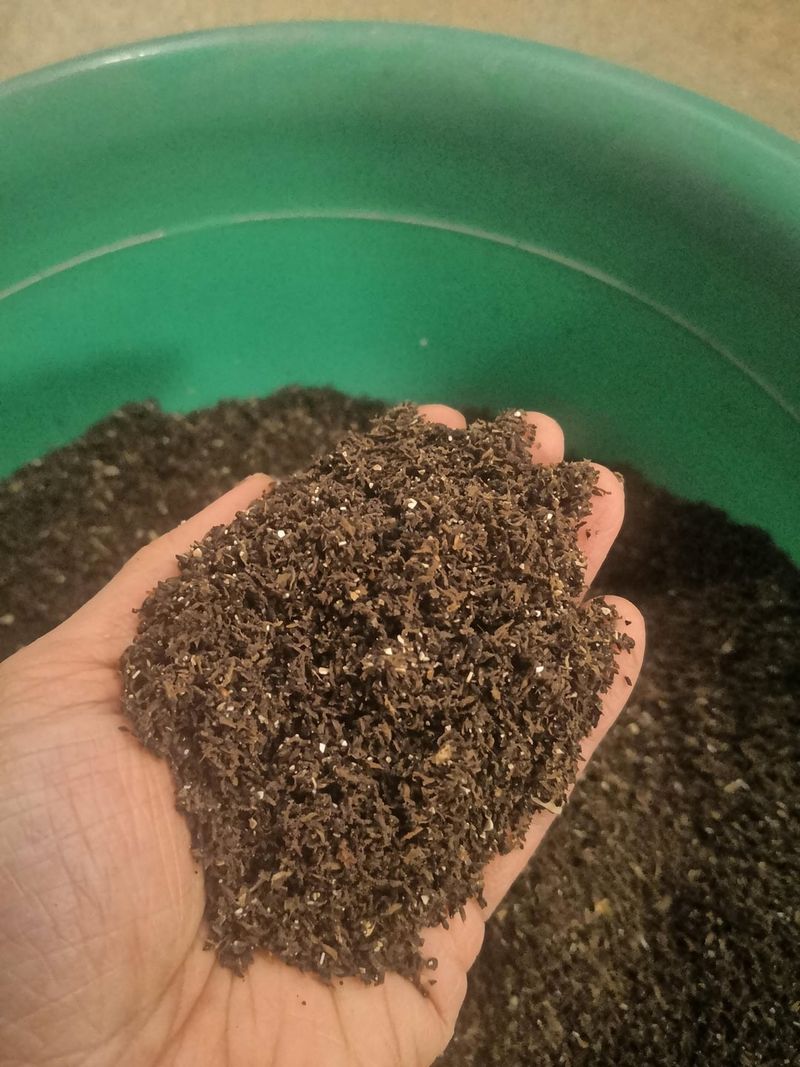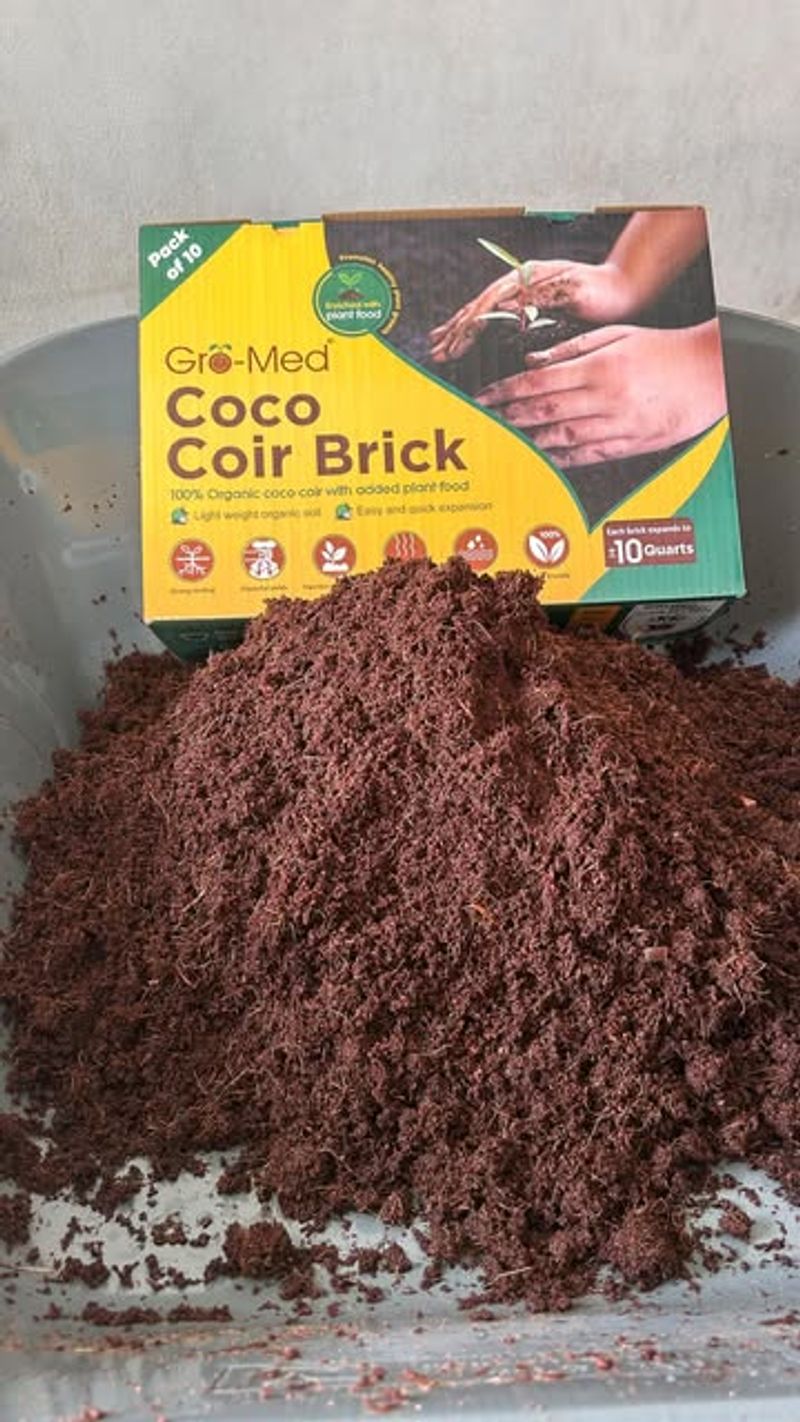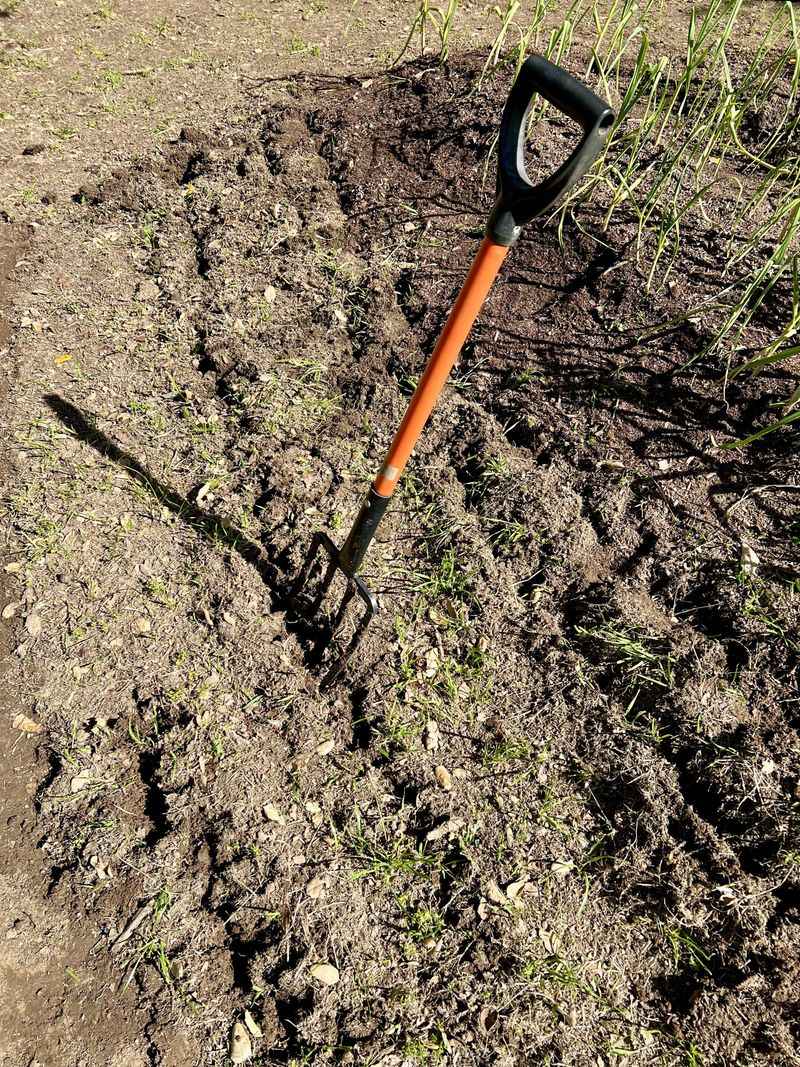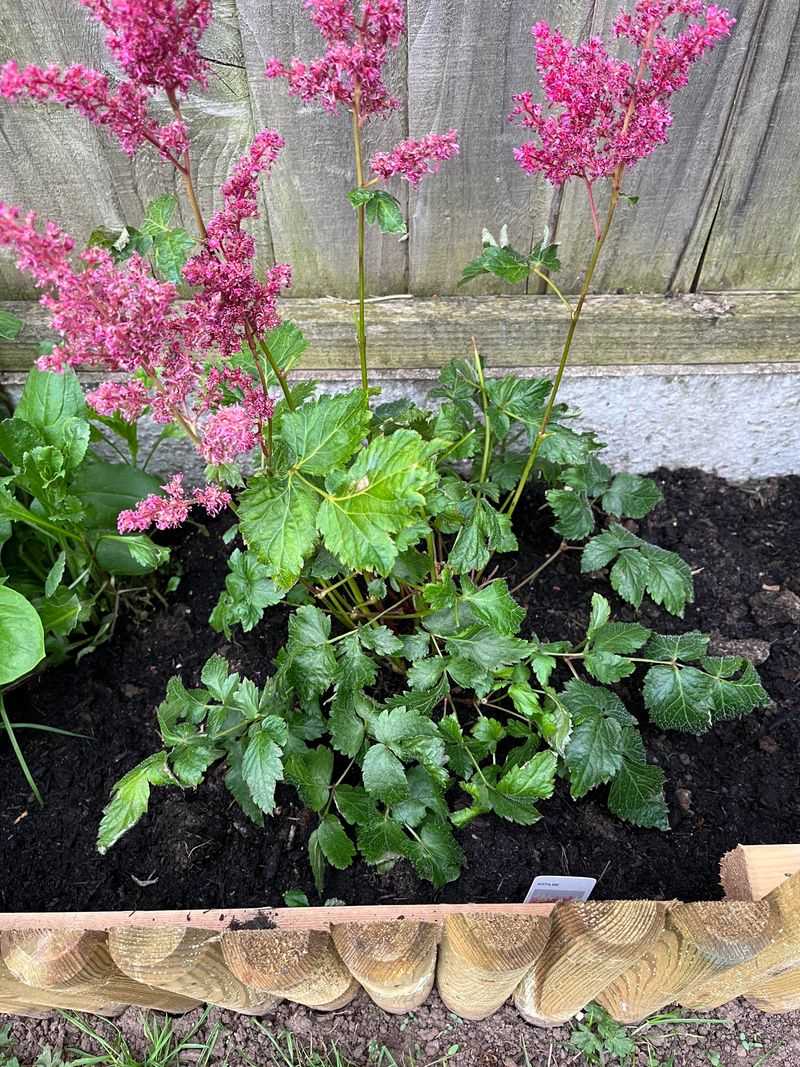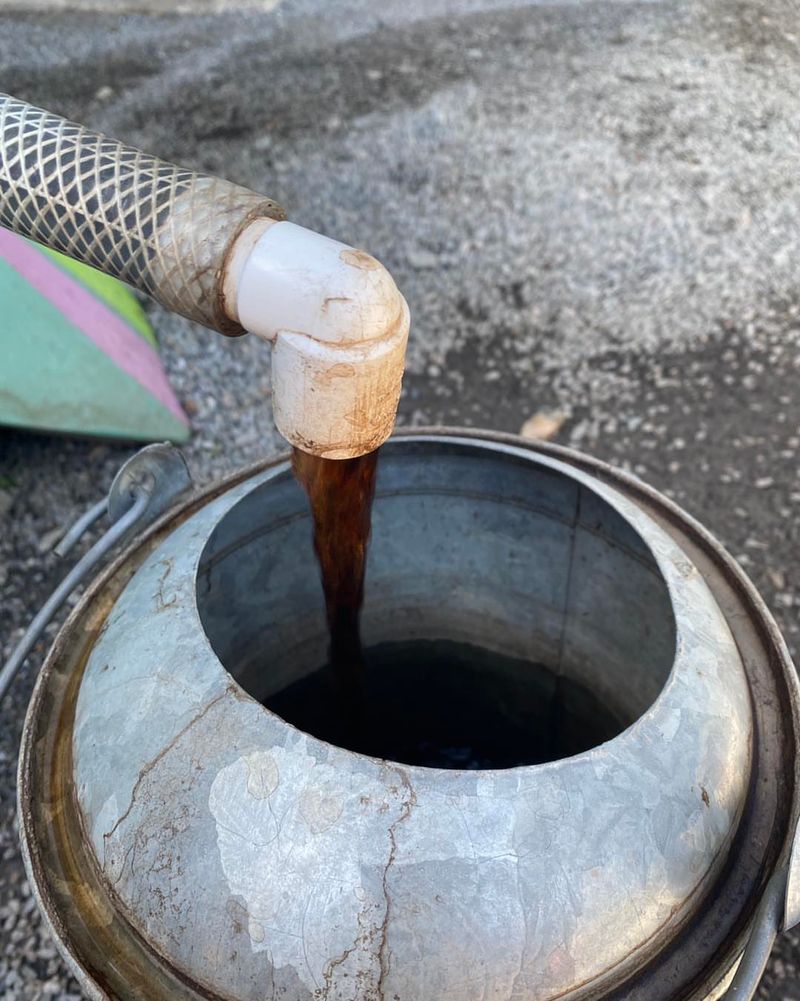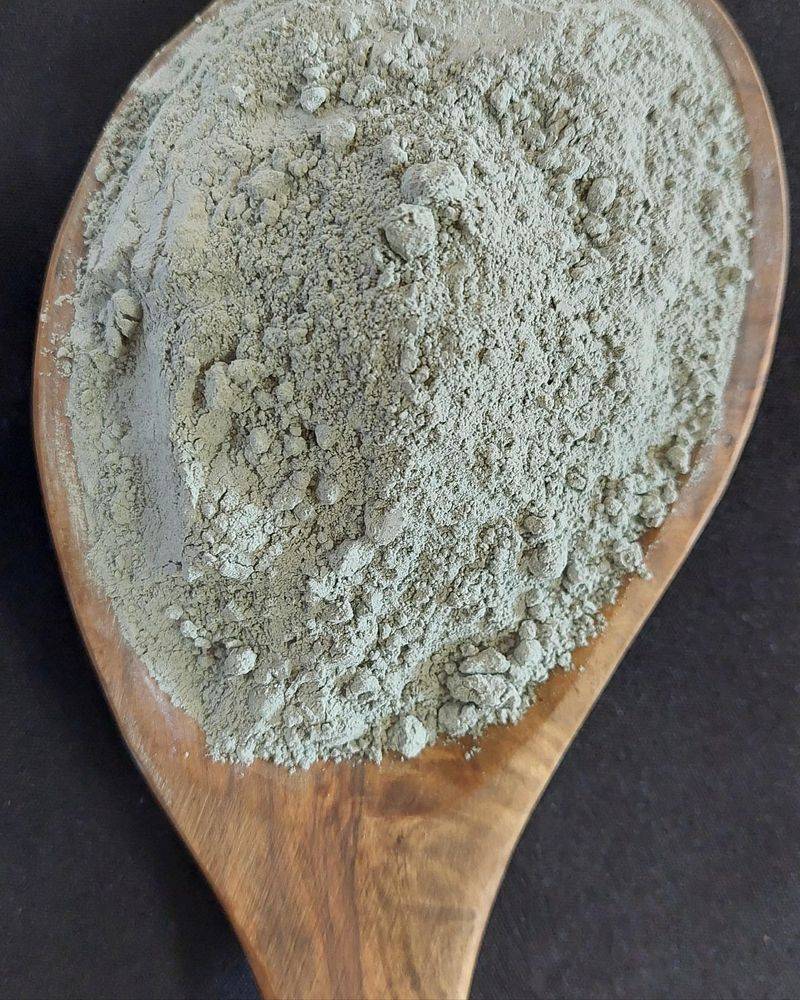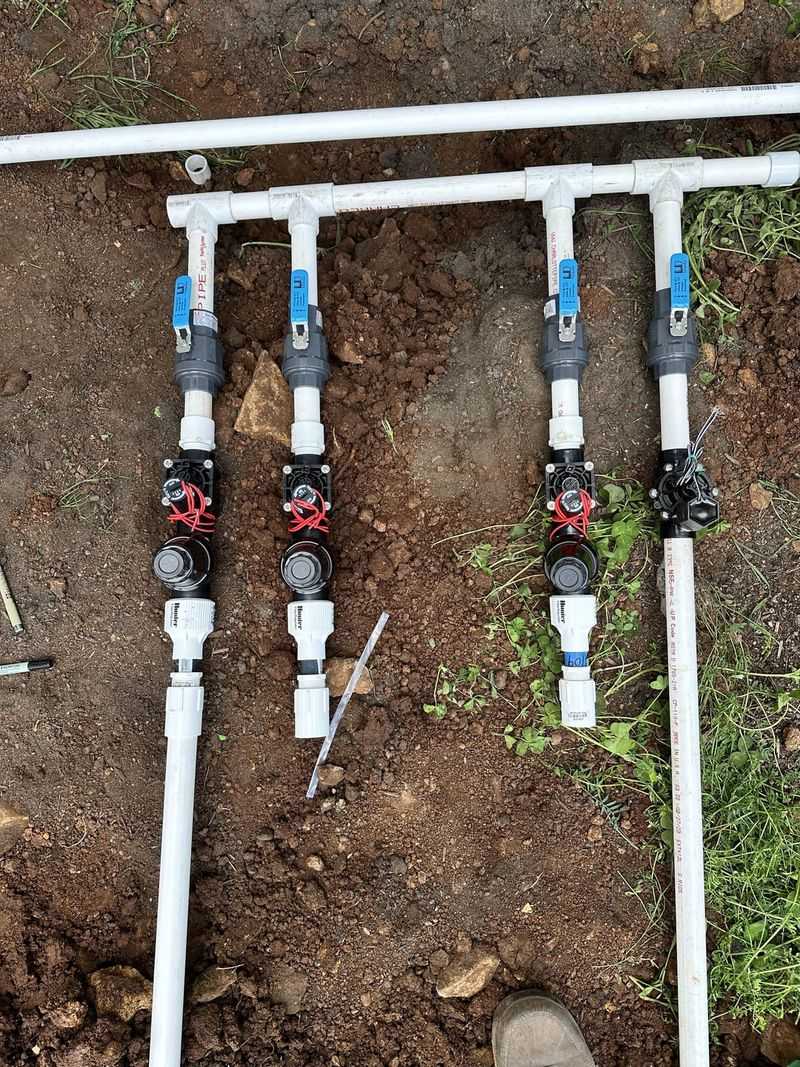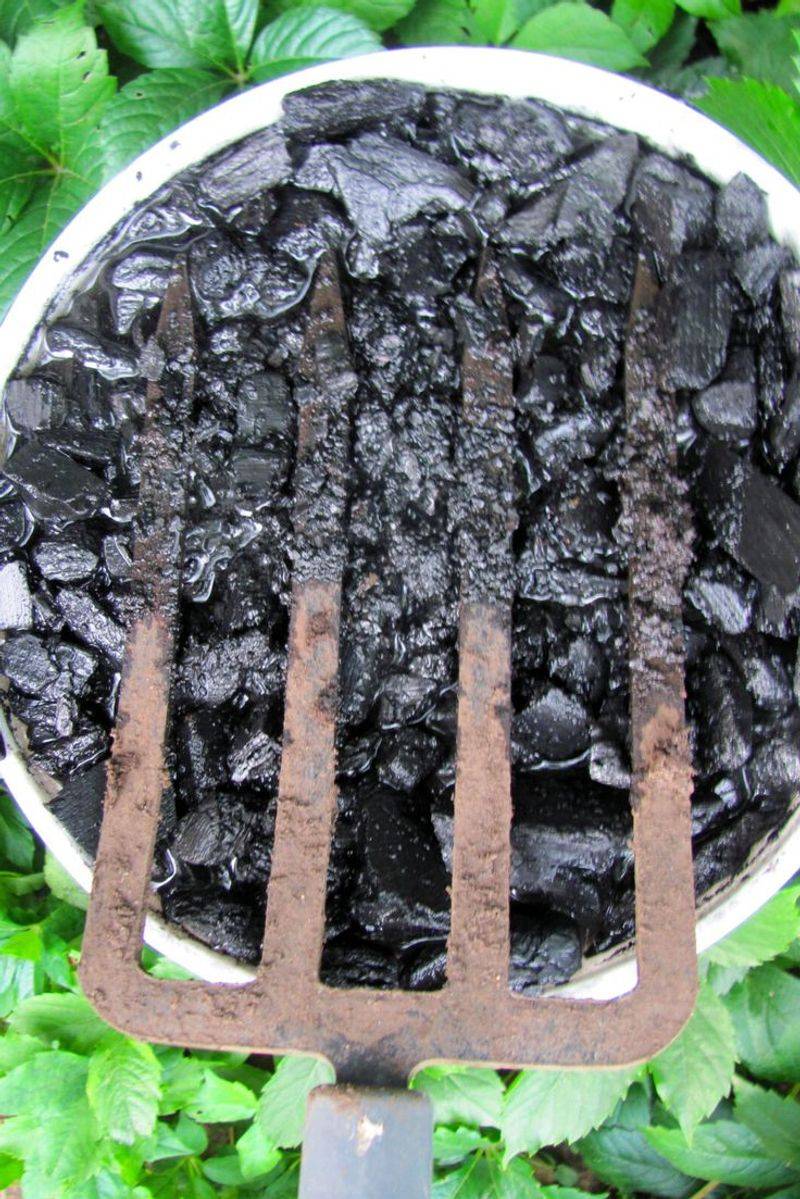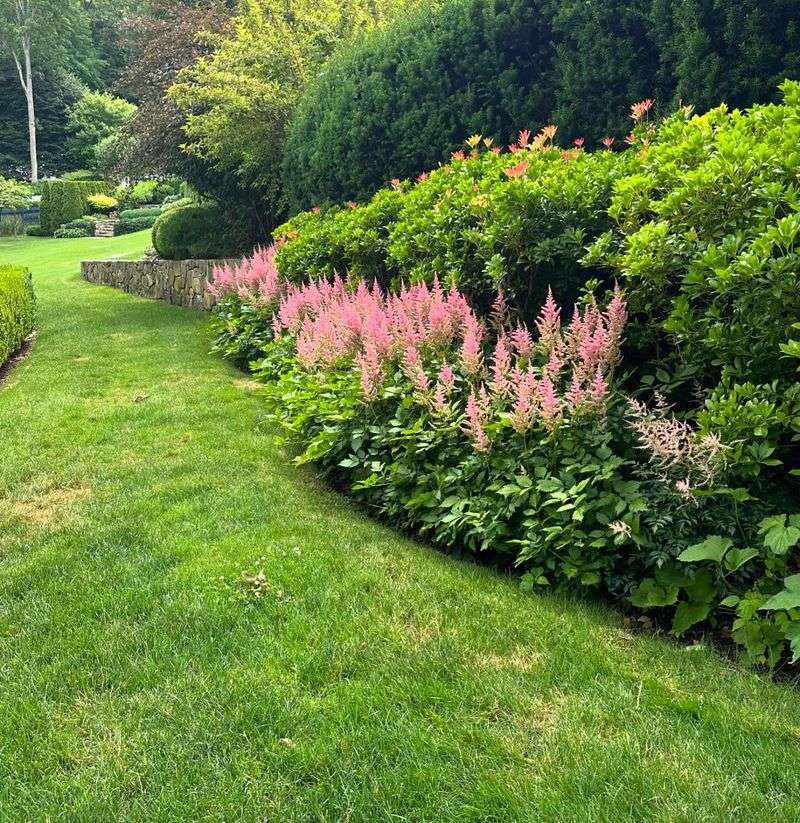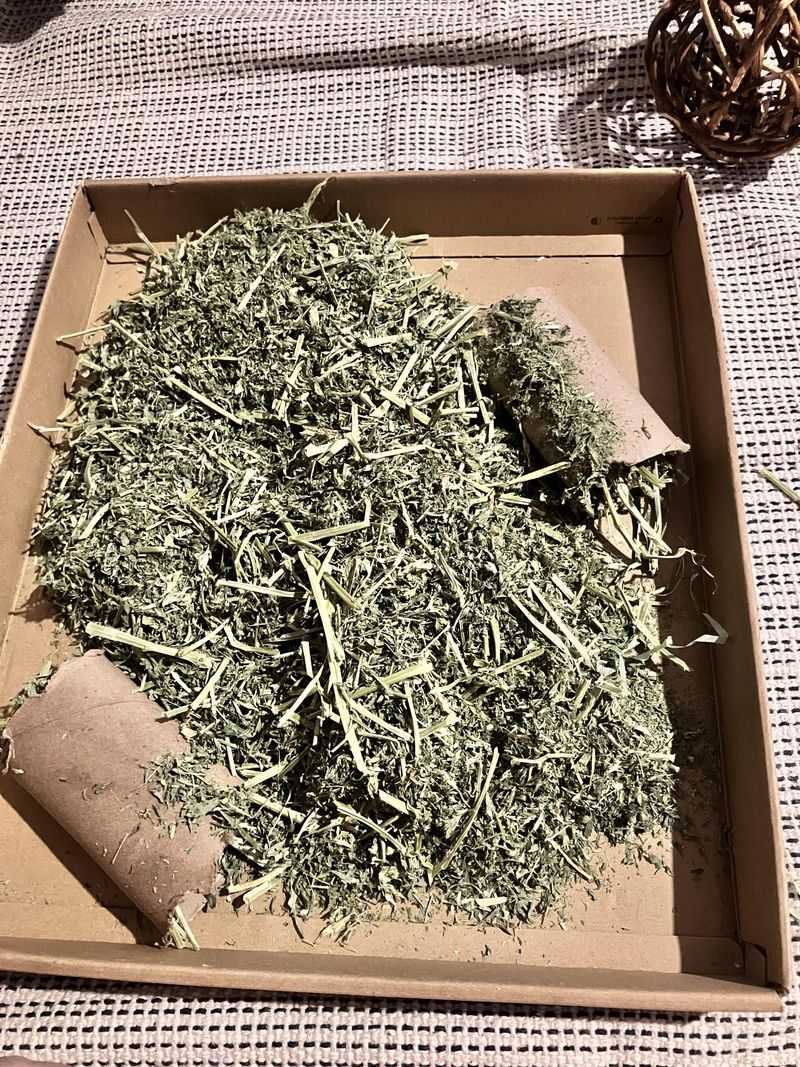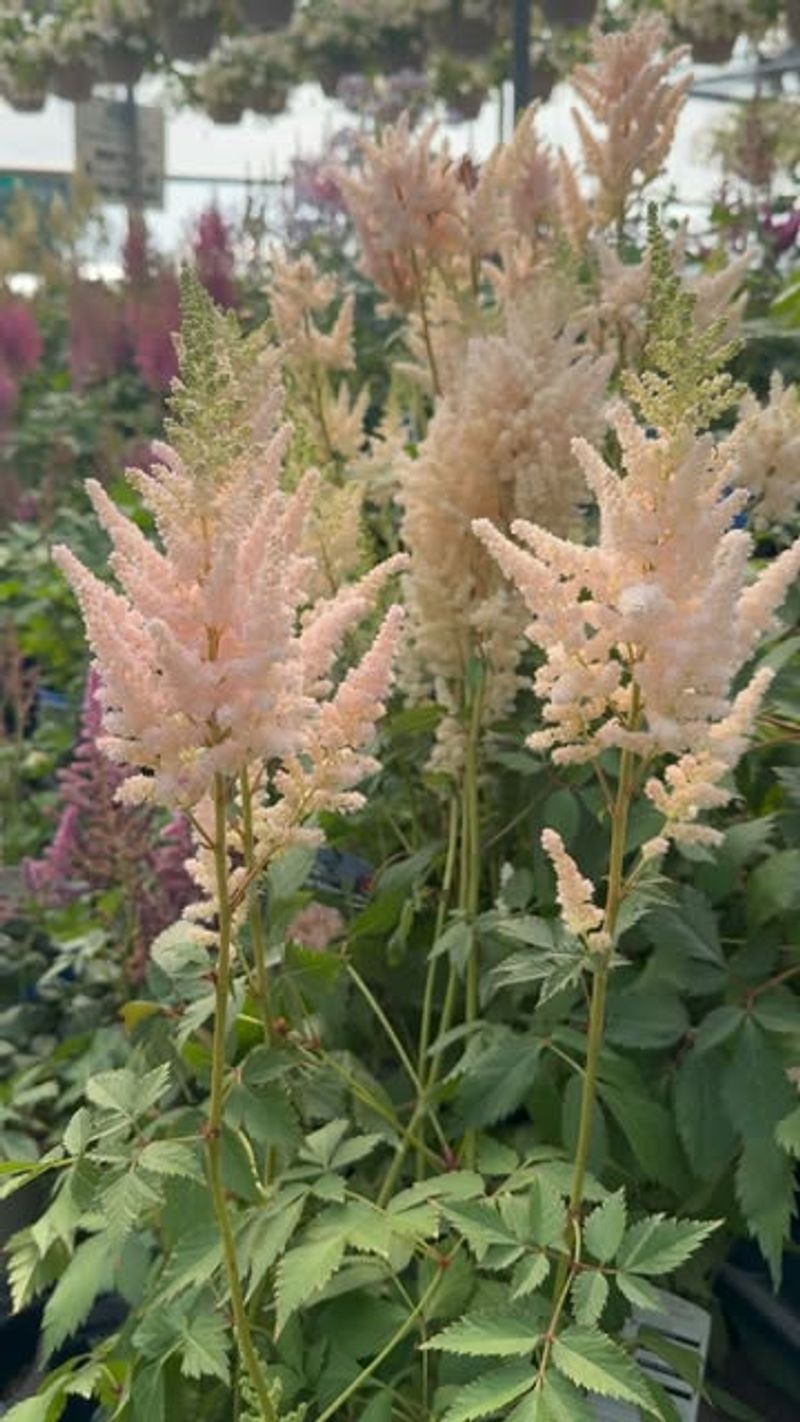Astilbe plants love moisture and cool shade, but summer heat can really wear them down. When the soil dries out or drains too fast, their pretty blooms start to droop.
The good news? With the right soil tricks, you can keep your astilbe happy—even during the hottest days of the year.
1. Mulch Like You Mean It
A thick layer of organic mulch is your astilbe’s best friend during hot weather. Spread 3-4 inches of shredded leaves, pine needles, or bark around your plants, keeping it an inch away from the stems.
This protective blanket keeps roots cool, locks in crucial moisture, and slowly breaks down to feed the soil. As summer progresses, check your mulch depth and replenish as needed – it compacts over time, reducing its effectiveness.
2. Morning Watering Ritual
Timing matters tremendously when watering astilbes in summer heat. Early morning irrigation allows water to penetrate deeply before the day’s heat arrives. Aim to deliver about 1-2 inches weekly, adjusting for rainfall.
Watering deeply but less frequently encourages roots to grow downward, accessing cooler, moister soil layers. Avoid evening watering which can promote fungal issues that astilbes are prone to developing when foliage remains wet overnight.
3. Humic Acid Boost
Humic acid works wonders for heat-stressed astilbes by improving how roots absorb nutrients and water. Apply a liquid humic acid solution monthly during summer, following package directions for dilution rates.
Garden centers sell this soil enhancer in concentrated form. Beyond improved nutrient uptake, humic acid helps soil retain moisture and enhances beneficial microbial activity. Your astilbes will show their appreciation through stronger stems and more vibrant blooms even when temperatures climb.
4. Shade-Casting Companions
Strategic planting can create natural air conditioning for your astilbes. Position taller plants like hostas or ferns on the south or west sides to cast cooling afternoon shadows over your heat-sensitive beauties.
These living sunshades reduce soil temperature by several degrees during the hottest part of the day. As a bonus, the varied leaf textures create a visually appealing garden design. Just ensure companion plants have similar water requirements to avoid competition for moisture.
5. pH Balance Magic
Astilbes thrive in slightly acidic soil with a pH between 5.5 and 6.5. Summer heat can alter soil pH, especially if you’re using alkaline municipal water. Test your soil regularly with an inexpensive kit from any garden center.
If your pH creeps above 6.5, work in some peat moss or use acidic fertilizers. For overly acidic soils, a light dusting of garden lime helps. Maintaining optimal pH ensures your astilbes can properly absorb nutrients even during stressful heat waves.
6. Worm Castings Wonder
Worm castings are nature’s perfect soil amendment for heat-stressed astilbes. Gently work a thin layer into the soil surface around your plants monthly during summer. These nutrient-rich pellets improve soil structure while providing slow-release nourishment.
Beyond nutrients, worm castings contain beneficial microbes that help plants withstand heat stress. They also improve water retention without making soil soggy. Look for quality castings at garden centers or start your own worm bin for an endless supply.
7. Coconut Coir Secret
Coconut coir might be your astilbe’s summer salvation. Mix this sustainable alternative to peat moss into your soil before summer heat arrives. Its exceptional water-holding capacity keeps roots moist without becoming waterlogged.
Coir maintains its structure longer than peat, creating persistent air pockets crucial for healthy root development. Before using, soak compressed coir bricks in water until they expand, then blend with your existing soil at a ratio of about 30% coir to 70% soil.
8. Vertical Soil Vents
Create breathing tubes for your astilbe’s root zone by pushing a garden fork into the soil around plants, about 8 inches deep. Make these ventilation holes every few weeks during summer, staying 6 inches from plant crowns.
These channels allow oxygen to reach deeper soil layers and help water penetrate more effectively. Compacted soil suffocates roots, especially problematic during heat stress. After creating vents, water thoroughly to take advantage of the improved penetration pathways.
9. Mycorrhizal Fungi Network
Mycorrhizal fungi form a remarkable underground partnership with astilbe roots. Apply a mycorrhizal inoculant to your soil early in the season or during planting. These beneficial fungi essentially extend your plant’s root system, accessing water and nutrients from a much larger soil area.
During heat stress, this expanded network becomes crucial for survival. The fungi also produce compounds that help plants resist drought. Most garden centers carry granular or powder forms that can be sprinkled around existing plants.
10. Compost Tea Brewing
Compost tea delivers a concentrated dose of beneficial microbes directly to your astilbe’s root zone. Fill a cloth bag with finished compost, suspend it in a bucket of water, and let it steep for 24-48 hours, stirring occasionally.
Apply this nutrient-rich liquid to your astilbes weekly during hot weather. The microorganisms in compost tea improve soil structure and help plants access nutrients more efficiently. For best results, use within hours of brewing and apply directly to the soil, not the foliage.
11. Rock Dust Minerals
Volcanic rock dust provides a slow-release source of trace minerals that help astilbes withstand heat stress. Sprinkle a thin layer around plants in early summer, gently working it into the top inch of soil.
These microscopic rock particles release silicon, magnesium, iron and dozens of other elements as they break down. Plants supplied with a full spectrum of minerals develop stronger cell walls and more efficient water-use systems. Rock dust is available at specialty garden centers or online.
12. Drip Irrigation Installation
Drip irrigation delivers water precisely where astilbes need it – at the soil level. Install a simple system using perforated soaker hoses or proper drip lines with emitters placed near plant bases.
Water applied directly to the soil reduces evaporation loss by up to 70% compared to sprinklers. Most systems can be attached to timers, ensuring consistent moisture even during vacation. The slow delivery rate allows water to penetrate deeply rather than running off, crucial for astilbe’s shallow root systems.
13. Biochar Amendment
Biochar creates a permanent improvement to your astilbe’s soil structure. This charcoal-like substance has a honeycomb internal structure that holds water during wet periods and releases it during dry spells.
Mix biochar into your soil at about 10% by volume. Pre-charge it by soaking in compost tea or liquid fertilizer before application. Unlike organic matter which breaks down, biochar remains effective for decades, creating a long-term solution to summer heat challenges.
14. Soil Level Adjustments
Planting depth significantly impacts how astilbes handle summer heat. If crowns sit too high, roots dry out quickly. Too deep, and they may rot. Check your plants during watering – ideally, crowns should be just at soil level.
For exposed crowns, add an inch of compost-rich soil around plants, avoiding covering the crown itself. For deeply planted astilbes, carefully remove excess soil until you reach the proper level. This simple adjustment can dramatically improve summer survival rates.
15. Alfalfa Meal Magic
Alfalfa meal provides a natural growth stimulant called triacontanol that helps astilbes recover from heat stress. Sprinkle a thin layer around plants monthly during summer, scratching it lightly into the soil surface.
Beyond the growth hormone, alfalfa adds nitrogen and other nutrients while improving soil structure. Many gardeners report lusher growth and more vibrant blooms after application. Look for alfalfa meal in garden centers or feed stores – just ensure it doesn’t contain salt additives.
16. Soil Temperature Monitoring
Tracking soil temperature helps you respond to heat stress before your astilbes show damage. Insert a soil thermometer 4 inches deep near your plants, checking it during the hottest part of the day.
Astilbe roots begin struggling when soil exceeds 80°F. If readings approach this threshold, immediately apply extra mulch and increase watering frequency. Inexpensive soil thermometers are available at garden centers. Monitoring allows you to take preventive action rather than trying to revive already stressed plants.

